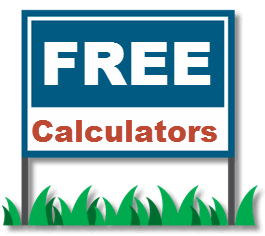Pre-K — 12 Student Geometry Lesson Plans
From architecture and art, to sports and cars, and even nature, geometry shapes the world around us. Used to understand objects in terms of their size, shape, and position, geometry focuses on two-dimensional and three-dimensional shapes and figures. Educators in the early grades face the task of helping students to study, explore, and understand the properties and relationships of those shapes and figures, while high school geometry teachers help students develop their spatial reasoning and problem-solving skills through investigating and proving geometric theorems and properties.

Image via Flickr by Tom Woodward
The National Council of Teachers of Mathematics outlines four subcategories within the geometry standards. According to the NCTM, instructional programs from prekindergarten through grade 12 should enable all students to
- Analyze characteristics and properties of two- and three-dimensional geometric shapes and develop mathematical arguments about geometric relationships
- Specify locations and describe spatial relationships using coordinate geometry and other representational systems
- Apply transformations and use symmetry to analyze mathematical situations
- Use visualization, spatial reasoning, and geometric modeling to solve problems
Grades Pre-K – 4
In the early years of geometry instruction, students study shapes and solids. They develop problem-solving skills, deductive reasoning skills, and the ability to understand transformations, symmetry, and spatial reasoning. With the development of the Common Core State Standards, these young students are expected to be able to identify and describe shapes; analyze, compare, create, and compose shapes; reason with shapes and their attributes; draw and identify lines and angles; and classify shapes by the properties of their lines and angles.
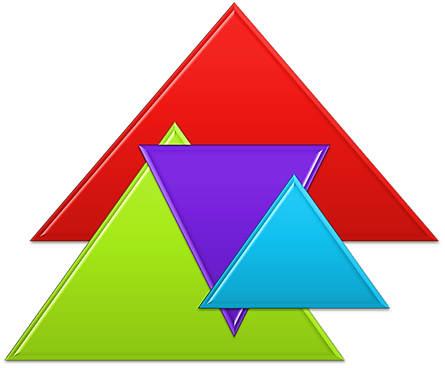
Image via Pixabay.com
1. Analyze characteristics and properties of two- and three-dimensional geometric shapes and develop mathematical arguments about geometric relationships
In this Pre-K – 2 lesson, students compare shapes, including various types of triangles, to determine the properties of triangles. Simple materials like attribute blocks allow students to use both the visual images and concrete shapes to help them describe the shapes and explain their reasoning for determining which shapes are, indeed, triangles. Source: Illuminations - NCTM
This group activity involving common classroom materials such as string and masking tape, allows K – 2 students to explore shapes and experiment with making new shapes. Beginning with three students holding onto the string, teachers reinforce properties of shapes by instructing students to determine which shapes they can make with various numbers of people in their group. Working through numbers 3 – 8, students learn they are able to make a variety of shapes with varying length, types of angles, and numbers of sides. Source: Geometry Playground - Exploratorium
Much like the String Shapes activity, this hands-on activity is more suited to students in grades 3 – 4, as they use string and multiple group members to transform shapes by moving their positions and seeing shapes from new perspectives. Students may predict how the shapes will change prior to changing their location and then draw conclusions about the actual outcomes of the activity. Source: Geometry Playground - Exploratorium
2. Specify locations and describe spatial relationships using coordinate geometry and other representational systems
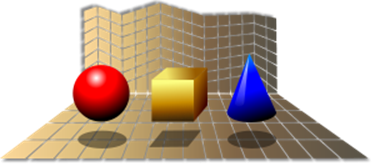
Image via OpenClipart.org
Spatial Concepts and Relationships
Designed for preschool and Pre-K students, this handout explains the advantages of teaching spatial relationships to early childhood students and gives suggestions for easy implementation in the classroom, including playing “I Spy” and “I See.” One of the most beneficial components of the handout is the list of words to use with youngsters, such as “near,” “under,” and “behind,” to help them describe spatial relationships. Source: Super Duper Publications
Using a clip from the PBS show Cyberchase, teachers will be able to create an engaging lesson using technology and real-world applications to introduce 3rd and 4th grade students to spatial relations through angles. Students will be involved in turning themselves in certain directions and measuring angles much like the characters in the video clip. Source: PBS Learning Media
Suited for students in grades 3 – 4 who are more familiar with ordered pairs and coordinate plans, this lesson is designed to reinforce the academic vocabulary associated with plotting points on a coordinate plane and to help students realize the real-world connection between geometry and coordinates to determine location. Students will be engaged in playing the traditional Battleship game while applying their academic vocabulary and geometry knowledge. Source: The UNC School of Education
3. Apply transformations and use symmetry to analyze mathematical situations
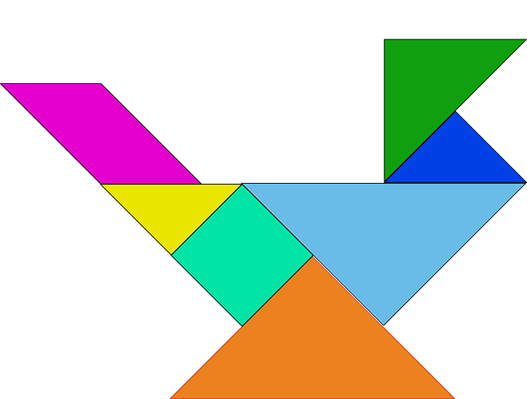
Image via Pixabay.com
Pre-K – 2 students will gain hands-on practice with flipping, sliding, and turning to recognize and apply transformations as they fit seven Tangram pieces into an outlined shape. Students will also have the opportunity to use a web-based tool for exploring Tangram puzzles. Source: Illuminations - NCTM
Lines of Symmetry, Shapes, and Symbols
This worksheet, designed for students in grades 3 – 4, could be used as an extension activity for students in earlier grades who demonstrate proficiency in understanding symmetry. Students are charged with the task of determining the number of lines of symmetry for various shapes on the worksheet, but it also explains that students may need to use a mirror to help them visualize the symmetry. Source: Dorling Kindersley
A hands-on lesson designed for students in grades 3 – 4, “Mirror, Mirror” gives students several opportunities to investigate polygons and what happens when they open and close hinged mirrors to determine whether the polygons tessellate. Understanding angle measurements and the number of triangles centered around the center point that form the polygon are two of the key concepts covered by this lesson. Source: PBS Learning Media - Mathline
4. Use visualization, spatial reasoning, and geometric modeling to solve problems
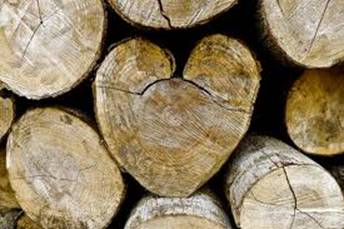
Image via Flickr by Lefteris Heretakis
Pre-K – 2 students will create paths for one another from one location to another using navigation words involving spatial relations and measurement. Once students are comfortable with navigation, they will solve the problem of getting a ladybug to her leaf. The lesson incorporates kinesthetic and visual elements as well as hands-on activities and technology. Source: Illuminations - NCTM
One way to get elementary school students interested in geometry is to help them recognize shapes in their environment: a Geometry Walk around the school is a perfect solution. This lesson offers suggestions for differentiating the lesson based on students’ age, as younger students may label shapes with Post-It notes while older students may capture shapes using digital photography. Graphing the results as an extension activity to other areas of mathematics is another way to differentiate the lesson. Source: The Proteacher Collection
This lesson could be used as a culminating activity for a 3rd/4th grade geometry unit, because students construct polygons to determine which are rigid and how many struts would be needed to make different polygons rigid. Exploration and experimentation occur in small-group settings, with students sharing and graphing their findings to aid them in making predictions about other polygons. Source: PBS Learning Media - Mathline
Grades 5 – 8
The middle years of geometry instruction call for students to study the properties and relationships of shapes and solids. They develop more abstract thinking capabilities that lead to analysis and reasoning skills. With the development of the Common Core State Standards, these adolescent students are expected to be able to graph points on the coordinate plane to solve real-world and mathematical problems; classify two-dimensional figures into categories based on their properties; solve real-world and mathematical problems involving area, surface area, volume, angle measure, and the volume of cylinders, cones, and spheres; draw, construct, and describe geometric figures and describe the relationships between them; understand congruence and similarity using physical models, transparencies, or geometric software; and understand and apply the Pythagorean Theorem.
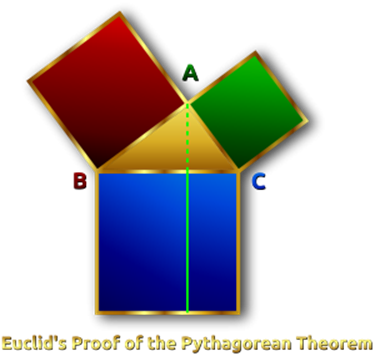
Image via OpenClipart.org
1. Analyze characteristics and properties of two- and three-dimensional geometric shapes and develop mathematical arguments about geometric relationships
Finding Volume Measurement of Solid Figures by Adding Component Parts
This middle school lesson is aligned to the Common Core State Standards for 5th grade mathematics. Students explore the volume of rectangular prisms and graph their results. Also included are links to other lessons on volume. Source: Bright Hub Education
In this hands-on activity, middle school students have the opportunity to experiment with Pythagoras’ Theorem by creating triangles with their classmates’ shoes and measuring in various ways. The activity approaches the equations using several mathematical operations, so that students can understand the theorem in multiple ways. Source: Hands On Math (Blog)
Recognizing Similar and Congruent Figures
This five-pack of worksheets is designed for 8th grade students and includes both two-dimensional and three-dimensional shapes. These sheets are perfect for formative assessment, as they provide a variety of examples and practice for students, so that teachers can quickly determine students’ strengths and weaknesses in similarity and congruence. Source: Math Worksheets Land
2. Specify locations and describe spatial relationships using coordinate geometry and other representational systems
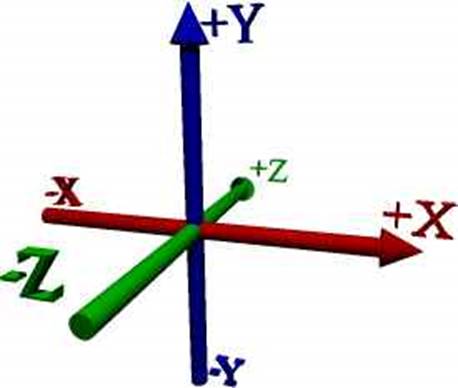
Image via Hoboes.com
This 5th grade lesson brings coordinate planes to life, as students become the ordered pairs and create shapes on a life-sized coordinate plane. Teachers will reinforce the x-axis and y-axis with students, since they have to walk to the appropriate locations on the coordinate plane to complete the activity.
6th graders will have so much fun using a coordinate plane to assist police in solving a crime of theft in this engaging lesson. Easily adapted to the geographic location of the students, this lesson will reinforce real-world applications of coordinates, problem solving, and reasoning.
In this lesson, students identify and classify a collection of polygons based on their attributes. Students then sort the polygons using Venn diagrams; they determine which sets and subsets are appropriate for each polygon. Differentiated activities abound in the lesson, and materials are easily accessible to educators from the site. Source: Illuminations - NCTM
3. Apply transformations and use symmetry to analyze mathematical situations
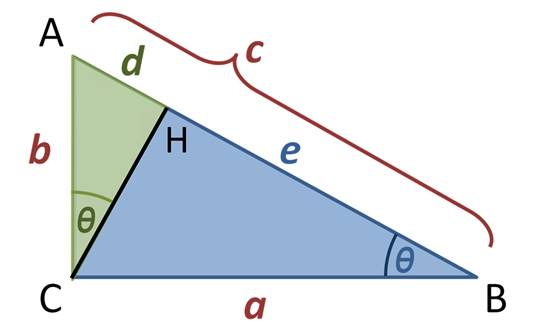
Image via Wikipedia.org
Determine Similarity by Comparing Triangles
This Common Core State Standard-aligned lesson comes complete with worksheets, practice problems, videos, and suggestions for differentiation to help 8th grade teachers and students explore triangles. Students will have a better understanding of congruent angles and shapes, especially after changing angles and drawing conclusions using various problems. Source: LearnZillion
Angle Relationships – Common Core Investigation
A middle school lesson geared toward 8th grade, “Angle Relationships” gives students the opportunity to explore the similarity of angles and draw conclusions based on their investigation. However, because this lesson includes guided practice, teachers could use it to accelerate students in earlier grades who are ready for the content of the lesson. Educators will appreciate the worksheets and PowerPoint that simply are a click away. Source: Better Lesson
Transformations in Geometry: A Unit
“Transformations in Geometry” is a comprehensive unit designed for the middle grades to instruct students in reflections, symmetry, rotation, translations, dilations, and tessellations, aka all things transformation. The unit addresses various learning styles, technology, literacy in mathematics, and real-world applications. Source: teachers.net
4. Use visualization, spatial reasoning, and geometric modeling to solve problems
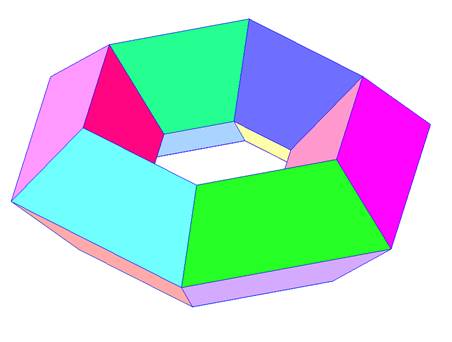
Image via Wikipedia.org
Educators may implement this lesson to help middle school students visualize and construct two-dimensional and three-dimensional shapes. Through hands-on exploration and investigation, students have to create structures using six cubes and then replicate silhouettes, or two-dimensional figures, using their cubes. Source: Annenberg Learner
This middle school lesson aims to help middle school students understand scale factor and surface area of various rectangular prisms. The lesson builds upon students’ prior knowledge of area and surface area, which should result in more student success, and includes a technology component to enhance student engagement. Source: Illuminations - NCTM
Graphic Design: Using Symmetry to Create Corporate Logos
This middle school lesson exudes student engagement. Students will explore geometry in real life and the arts and then apply their knowledge of geometry to their own unique logo, created through the use of symmetry. Source: PBS Learning Media - Mathline
Grades 9 – 12
High school geometry instruction requires more analysis, deductive and analytic reasoning, and problem solving than the previous years of instruction. The Common Core State Standards become even more rigorous at this level, as students analyze the properties of two- and three-dimensional shapes, reason about geometric relationships, and use the coordinate system. Specifically, these young adults are expected to focus on six areas of geometry: congruence; similarity, right triangles, and trigonometry; circles; expressing geometric properties with equations; geometric measurement and dimension; and modeling with geometry. These six areas of the CCSS align with the NCTM’s four geometry subcategories.
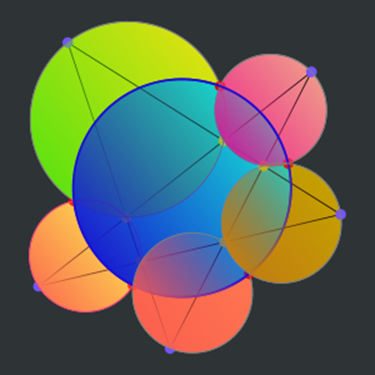
Image via OpenClipart.org
The CCSS also outline eight mathematical practices for high school students:
- Make sense of problems and persevere in solving them.
- Reason abstractly and quantitatively.
- Construct viable arguments and critique reasons of others.
- Model with mathematics.
- Use appropriate tools strategically.
- Attend to precision.
- Look for and make use of structure.
- Look for and express regularity in repeated reasoning.
1. Analyze characteristics and properties of two- and three-dimensional geometric shapes and develop mathematical arguments about geometric relationships
A lesson with real-life implications, “Bank Shot” gives students the opportunity to compare their strategies for successfully completing bank shots in games of billiards with those of their classmates. Students will prove theorems about lines and angles and use congruence and similarity criteria for triangles to solve problems. Source: National Council of Teachers of Mathematics
The objective of this lesson is for students to use right triangle trigonometry and the Pythagorean theorem to develop the law of cosines. Several examples are provided in the lesson, along with an activity sheet, to guide students through their learning. Source: Illuminations - NCTM
This lesson offers a hands-on approach to exploring various conjectures about triangle congruencies, as students use fettuccine noodles to test theorems and solve the problem involving congruent triangles. Even high school students enjoy using markers, paper, and glue, and this lesson provides those artistic opportunities to aid students in their learning. Source: Office for Mathematics, Science, and Technology Education, University of Illinois
2. Specify locations and describe spatial relationships using coordinate geometry and other representational systems
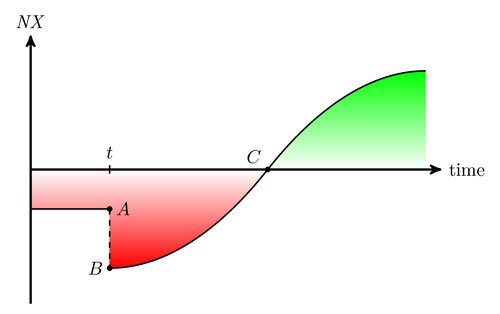
Image via Texample.net
Area and Perimeter in the Coordinate Plane
At times, educators struggle to find enough worksheets and resources for additional practice or remediation for students. This collection of worksheets, some with guided practice, is aligned to the CCSS and solves the problem of not having enough practice for students struggling with concepts related to the coordinate plane. Source: Math Worksheets Land
In this lesson, students use coordinates to compute perimeters of polygons and areas of triangles and rectangles, the distance formula, to prove simple geometric theorems algebraically. A real-world application is the focus of the lesson, and students have the opportunity to their own coordinate-axis system. Source: National Council of Teachers of Mathematics
Using Vectors to Navigate
This lesson would be appropriate for use as an extension activity after students have demonstrated proficiency in working with vectors in the coordinate plane. Students will use navigational vocabulary, such as “heading, bearing, direction, and distance” to compare “heading” in navigation and “direction of a vector” in a coordinate plane; then, they will use charts to plot a course for a boat from Lake Michigan through Muskegon Lake to the coal dock at the Cobb Plant. Source: Western Upper Peninsula Center for Science, Mathematics, and Environmental Education at Michigan Technical University
3. Apply transformations and use symmetry to analyze mathematical situations
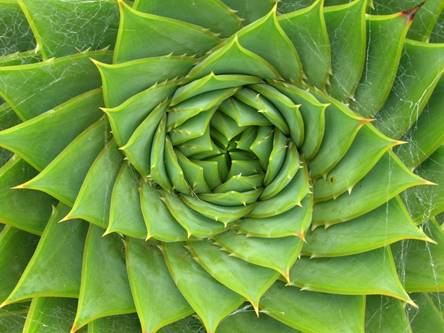
Image via Fotopedia.com
This lesson for grades 9 – 12 takes an alternate approach to rotational symmetry for regular polygons; students are asked to find the regular polygons that for a given angle or rotational symmetry rather than finding the angles of rotational symmetry for given regular polygons. A comprehensive lesson aligned to the CCSS, “Taking a Spin” includes the student activity sheet, specific questioning techniques for educators, and assessment suggestions. Source: National Council of Teachers of Mathematics
This activity involves students sorting fifteen diagrams and fifteen descriptions, all related to the skills and knowledge associated with the concept of transformation. When students need hands-on practice or a change of pace from worksheets and practice problems, a matching activity offers a more engaging method for learning. Source: JustMaths
Transformations: How to Shift Graphs on a Plane
At times, teachers need visual resources when instructing students in complex abstract concepts. This lesson, designed by a high school math teacher with a Master’s Degree in education, provides a video for student and teacher use and sample graphs to illustrate the skills of the lesson. Source: Education Portal
4. Use visualization, spatial reasoning, and geometric modeling to solve problems

Image via Wikipedia.org
Sometimes, high school students need to play games to understand mathematical concepts, and Static Nim is a game that will help students to learn how to represent the positions as the vertices of a directed graph and the moves as the edges of the graph. As students play the game, they will learn that solving the game requires partitioning the vertices into two sets, and they will learn which properties must be satisfied in order to win the game. Source: Illuminations - NCTM
As high school students complete their math courses, they question when they will use their learning in the “real world.” One of the best ways to show the real-world geometry connection is through architecture, and this site provides a variety of activities and resources to help students apply their knowledge of geometry to architecture. Source: Math-Kitecture
This lesson gives students the opportunity to apply their knowledge about circles, ellipses, hyperbolas, and parabolas by exploring and discovering conic sections by cutting a cone with a plane. Differentiation of the lesson is made possible through the use of dough, so that kinesthetic learners are able to physically manipulate the shapes rather than viewing them in 2D on a piece of paper. Source: Illuminations - NCTM
More Geometry Resources for Teachers
Most educators build their professional portfolios and filing cabinets with tried-and-true lessons and units they have tweaked and perfected over the years. But, if you are looking to add new activities or to fill a gap in a weaker area of your curriculum, you should consider using visiting some – or all – of the following online resources.
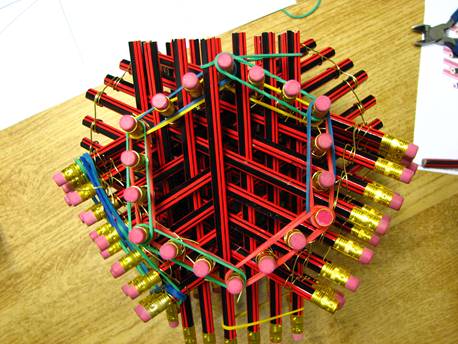
Image via Flickr by fdecomite
Pre-K Math: Shapes and Geometry
This site offers a collection of hands-on activities for students in preschool and prekindergarten, so educators have the ability to reinforce shapes and their properties with even the youngest of learners. Source: Prekinders.com
Math Warm-Ups: 2-Dimensional Geometric Shapes
Developed by a kindergarten teacher, this site offers a variety of lesson ideas and tasks that teachers could implement nearly immediately in their classroom, especially because there are links to other Pre-K-2 teachers’ blogs. Photographs of the charts, graphs, and classroom products enhance the ideas offered on the site. Source: Kindergarten Kindergarten (Blog)
Teaching First Grade Math: Shapes
Because of the national emphasis on reading across the curriculum, it is helpful to have a resource for children’s literature, websites, and additional resources for teachers who otherwise may not know where to start. This blog is a one-stop shop for all of your reading-across-the-curriculum needs in the elementary grades. Source: Open Wide, Look Inside (Blog)
Free Math Worksheets, Problems, and Practice
Designed for students in grades 1-8, this site offers activities for independent practice and review. Easily navigable for students who are comfortable using a computer, the site offers practice in multiple areas of mathematics categorized by skills and concepts. Source: Adapted Mind
Geometry: Shape, Constructions, Polyhedra, Pythagoras…
This site, geared toward middle schoolers, contains dozens of games and interactive math tools, math activities, and math fun for kids and their teachers. The categorized content makes for easy viewing and searching. Source: Johnnie’s Middle School Math
This site offers resources, tips, worksheets, and anything else a busy educator may be looking for, and the best thing is that all of the materials are made by teachers, for teachers. The site boasts more than 290,000 free resources for teachers, and educators have the option of registering to access more content.
National Library of Virtual Manipulatives
A collection of manipulatives specifically designed for geometry students in grades Pre-K – 12, this site offers hands-on practice and visualization opportunities for students who may need extra practice in nearly any area of geometry.

